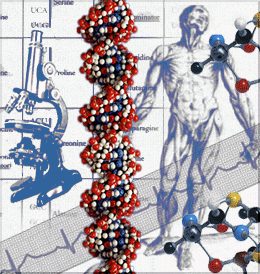 Scientists say DNA tests have revealed the usual remains to be human rather than alien It was hailed as proof of alien life, a mummified visitor from another planet. Ten years after the remains of a six-inch ‘space alien’ were first discovered, they have been confirmed as ‘human’ by Stanford scientists in a new documentary film Sirius.
Scientists say DNA tests have revealed the usual remains to be human rather than alien It was hailed as proof of alien life, a mummified visitor from another planet. Ten years after the remains of a six-inch ‘space alien’ were first discovered, they have been confirmed as ‘human’ by Stanford scientists in a new documentary film Sirius. Since the remains of the small humanoid - known as the 'Atacama Humanoid' and nicknamed Ata - were discovered in Chile's Atacama Desert 10 years ago there has been much speculation about its origins. Theories have included that the bones were those of an aborted fetus, or a monkey, or even an alien that had crash-landed on earth. A comparison of foetus x-rays show a remarkable difference between human fetus skeletal development and the x-rays of the Atacama humanoid, the researchers claim in a report published today.
Since the remains of the small humanoid - known as the 'Atacama Humanoid' and nicknamed Ata - were discovered in Chile's Atacama Desert 10 years ago there has been much speculation about its origins. Theories have included that the bones were those of an aborted fetus, or a monkey, or even an alien that had crash-landed on earth. A comparison of foetus x-rays show a remarkable difference between human fetus skeletal development and the x-rays of the Atacama humanoid, the researchers claim in a report published today.
Dr Steven Greer, who led the project and documentary, has hit back at critics who claim the body is a hoax.'The CAT scan clearly shows internal chest organs -lungs and what appears to be the remains of a heart structure,' he said.
 'There is absolutely no doubt that the specimen is an actual organism and that it is not a hoax of any kind. 'This fact has been confirmed by Dr. Nolan and Dr. Lachman at Stanford.'In the weeks leading up to Monday’s premier of Sirius, UFO enthusiasts had grown increasingly excited that the film could announce a major breakthrough in the search for extra-terrestrial life forms.
'There is absolutely no doubt that the specimen is an actual organism and that it is not a hoax of any kind. 'This fact has been confirmed by Dr. Nolan and Dr. Lachman at Stanford.'In the weeks leading up to Monday’s premier of Sirius, UFO enthusiasts had grown increasingly excited that the film could announce a major breakthrough in the search for extra-terrestrial life forms. Experts say the small skeleton certainly bears many of the hallmarks of what we have come to believe aliens look like, in particular a large head overshadowing a small body.According to Chilean local newspaper, a man called Oscar Munoz found the remain on Oct. 19, 2003 when he was looking for objects of historical value in La Noria, a ghost town in the Atacama Desert. Near an abandoned church, Munoz found a white cloth containing, according to the newspaper, ‘a strange skeleton no bigger than 15cm [the size of a pen]. It was a creature with hard teeth, a bulging head with an additional odd bulge on top.
Experts say the small skeleton certainly bears many of the hallmarks of what we have come to believe aliens look like, in particular a large head overshadowing a small body.According to Chilean local newspaper, a man called Oscar Munoz found the remain on Oct. 19, 2003 when he was looking for objects of historical value in La Noria, a ghost town in the Atacama Desert. Near an abandoned church, Munoz found a white cloth containing, according to the newspaper, ‘a strange skeleton no bigger than 15cm [the size of a pen]. It was a creature with hard teeth, a bulging head with an additional odd bulge on top. 
Its body was scaly and of dark color. Unlike humans, it had nine ribs. A DNA sample from bone marrow extracted from the specimen, was analyzed by scientists at a prestigious American university.
 Scientists believe the unusual skeleton is human, yet it has nine ribs' After six months of research by leading scientists at Stanford University, the Atacama Humanoid remains a profound mystery,' said physician and Disclosure Project founder Dr. Steven Greer.'We traveled to Barcelona Spain in late September 2012 to obtain detailed X Rays, CAT scans and take genetic samples for testing at Stanford University.
Scientists believe the unusual skeleton is human, yet it has nine ribs' After six months of research by leading scientists at Stanford University, the Atacama Humanoid remains a profound mystery,' said physician and Disclosure Project founder Dr. Steven Greer.'We traveled to Barcelona Spain in late September 2012 to obtain detailed X Rays, CAT scans and take genetic samples for testing at Stanford University.
 'We obtained excellent DNA material by surgically dissecting the distal ends of two right anterior ribs on the humanoid. 'These clearly contained bone marrow material, as was seen on the dissecting microscope that was brought in for the procedure,' Sirius premiered in Los Angeles on Earth Day and will be released online and in select theaters worldwide, starting April 22. The humanoid was first discovered in 2003 in the remote Atacama desert region of Chile. In the new documentary, a DNA sample from bone marrow extracted from the specimen, was analyzed by scientists at a prestigious American university.
'We obtained excellent DNA material by surgically dissecting the distal ends of two right anterior ribs on the humanoid. 'These clearly contained bone marrow material, as was seen on the dissecting microscope that was brought in for the procedure,' Sirius premiered in Los Angeles on Earth Day and will be released online and in select theaters worldwide, starting April 22. The humanoid was first discovered in 2003 in the remote Atacama desert region of Chile. In the new documentary, a DNA sample from bone marrow extracted from the specimen, was analyzed by scientists at a prestigious American university.
 Scientists believe the unusual skeleton is human, yet it has nine ribs' After six months of research by leading scientists at Stanford University, the Atacama Humanoid remains a profound mystery,' said physician and Disclosure Project founder Dr. Steven Greer.'We traveled to Barcelona Spain in late September 2012 to obtain detailed X Rays, CAT scans and take genetic samples for testing at Stanford University.
Scientists believe the unusual skeleton is human, yet it has nine ribs' After six months of research by leading scientists at Stanford University, the Atacama Humanoid remains a profound mystery,' said physician and Disclosure Project founder Dr. Steven Greer.'We traveled to Barcelona Spain in late September 2012 to obtain detailed X Rays, CAT scans and take genetic samples for testing at Stanford University.  'We obtained excellent DNA material by surgically dissecting the distal ends of two right anterior ribs on the humanoid. 'These clearly contained bone marrow material, as was seen on the dissecting microscope that was brought in for the procedure,' Sirius premiered in Los Angeles on Earth Day and will be released online and in select theaters worldwide, starting April 22. The humanoid was first discovered in 2003 in the remote Atacama desert region of Chile. In the new documentary, a DNA sample from bone marrow extracted from the specimen, was analyzed by scientists at a prestigious American university.
'We obtained excellent DNA material by surgically dissecting the distal ends of two right anterior ribs on the humanoid. 'These clearly contained bone marrow material, as was seen on the dissecting microscope that was brought in for the procedure,' Sirius premiered in Los Angeles on Earth Day and will be released online and in select theaters worldwide, starting April 22. The humanoid was first discovered in 2003 in the remote Atacama desert region of Chile. In the new documentary, a DNA sample from bone marrow extracted from the specimen, was analyzed by scientists at a prestigious American university.
They concluded that it was an 'interesting mutation' of a male human that had survived post-birth for between six and eight years. ‘I can say with absolute certainty that it is not a monkey.
 'It is human - closer to human than chimpanzees. It lived to the age of six to eight,’ said Garry Nolan, director of stem cell biology at Stanford University's School of Medicine in California. 'Obviously, it was breathing, it was eating, it was metabolizing. 'It calls into question how big the thing might have been when it was born.
'It is human - closer to human than chimpanzees. It lived to the age of six to eight,’ said Garry Nolan, director of stem cell biology at Stanford University's School of Medicine in California. 'Obviously, it was breathing, it was eating, it was metabolizing. 'It calls into question how big the thing might have been when it was born. 'The small skeleton bears many of the hallmarks of what we have come to believe ETs look like, in particular a large head overshadowing a small body‘The DNA tells the story and we have the computational techniques that allows us to determine, in very short order, whether, in fact, this is human,’ Nolan, who performed the DNA tests, explains in the film.
'The small skeleton bears many of the hallmarks of what we have come to believe ETs look like, in particular a large head overshadowing a small body‘The DNA tells the story and we have the computational techniques that allows us to determine, in very short order, whether, in fact, this is human,’ Nolan, who performed the DNA tests, explains in the film.
In addition to studying the origins of Ata, Sirius explores the subject of UFO and ET visitation, the disclosure of secret UFO files, and the investigation of advanced energy and propulsion technologies extra-terrestrial civilizations are using to travel to Earth. Based on evidence gathered over the past 20 years by physician and Disclosure Project founder Dr. Steven Greer, Sirius reveals how and why these energy technologies are being suppressed in favor of maintaining the current petrochemical system. premiered in Los Angeles on Earth Day and will be released online and in select theaters worldwide, starting April 22 2013.



No comments:
Post a Comment